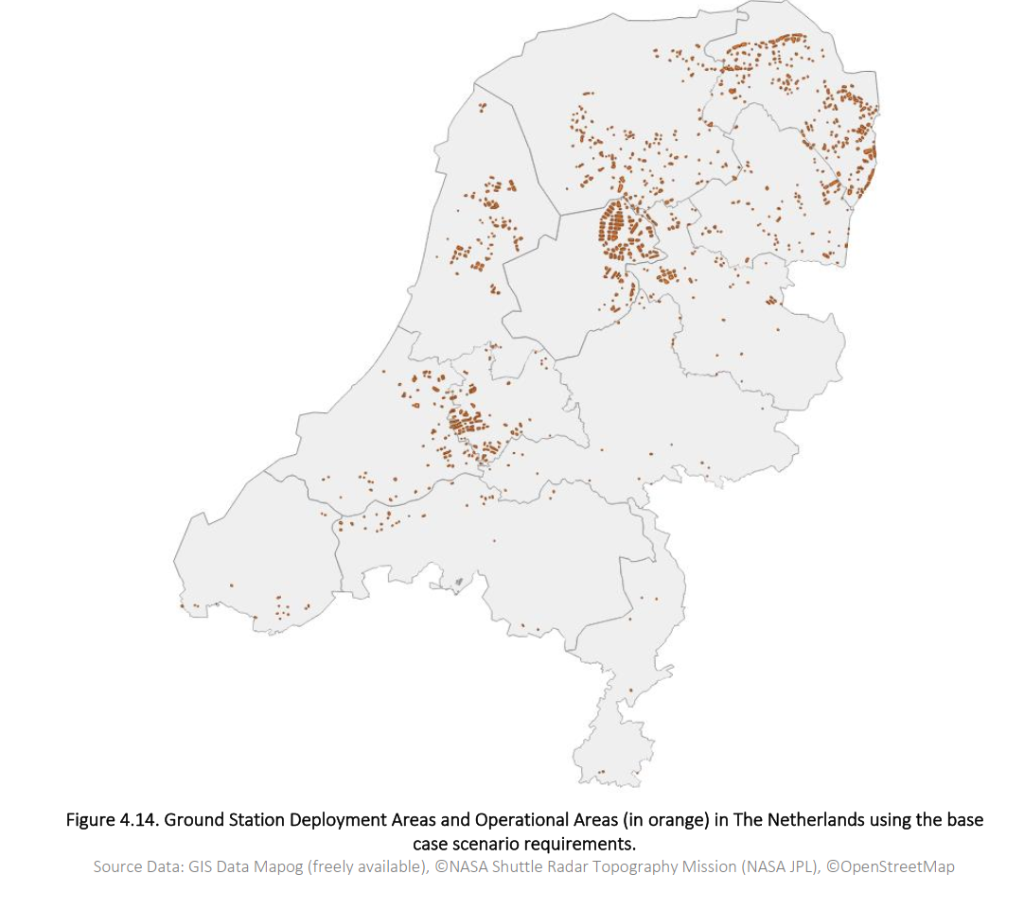GIS study on suitable AWE sites in The Netherlands
Identifying deployment opportunities for Airborne Wind Energy in The Netherlands
This report presents the site identification analysis for Airborne Wind Energy (AWE) in the Netherlands under the DEM-AWE project. Using GIS and publicly available data, the study evaluates suitable locations for AWE deployment, considering environmental, geographic, and logistical factors, adapting methodologies from the ones made for Germany and Ireland.
Key site selection criteria include slope, operational radius, and proximity to settlements. Data from OpenStreetMap, NASA SRTM, and the Nationaal Georegister were analyzed using QGIS. The study identified 35–115 km² of deployment area and 590–1,270 km² of operational area, with 650–1,240 sites and up to 2,810 devices, supporting 1.9–4.2 GW of AWE capacity. Friesland, Groningen, and Flevoland emerged as high-potential areas due to their flat terrain and agricultural co-use potential, whereas Noord-Holland and Limburg showed lower suitability due to urban density and varied topography.
Key Site Identification Factors:
Adequate space for Ground Stations (GS) and AWE operation.
Minimal collision risks with obstacles or aircraft.
Safe distances from public spaces, airports, and protected areas.
Suitable terrain for site development.
👉 Zenodo repository: Site Identification Analysis for AWE Devices. A case study in The Netherlands

While the Netherlands’ high population density limits large-scale AWE deployment compared to countries like Ireland and Germany, the base case identified more than 1,200 sites and up to 2,800 devices, supporting 2–4 GW of AWE capacity. Results highlight operational radius as a critical factor influencing deployment potential, necessitating developer-specific optimizations.
The DEM-AWE team is assessing AWE deployment potential using an analytical tool developed by BlueWise Marine, previously applied in Germany. Findings have influenced renewable energy planning and will support further refinements for key countries like France and Spain, integrating geographic, technological, and regulatory constraints to optimize AWE deployment across Europe.
